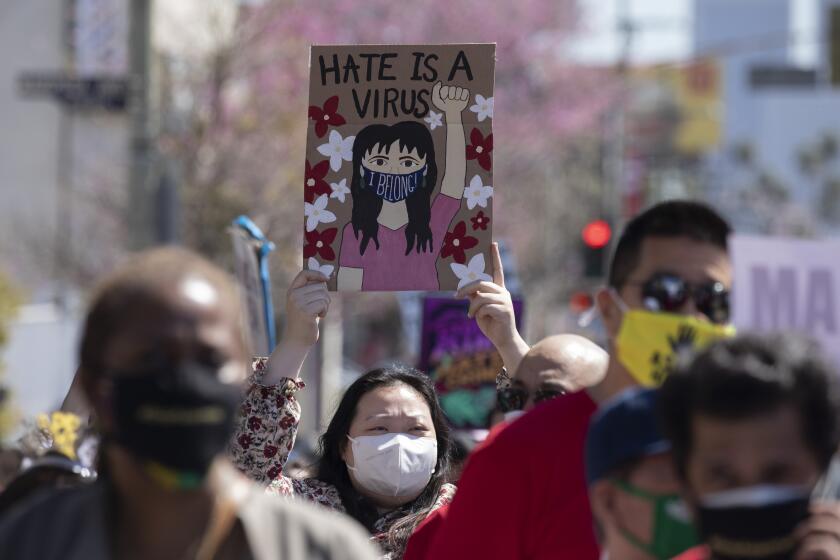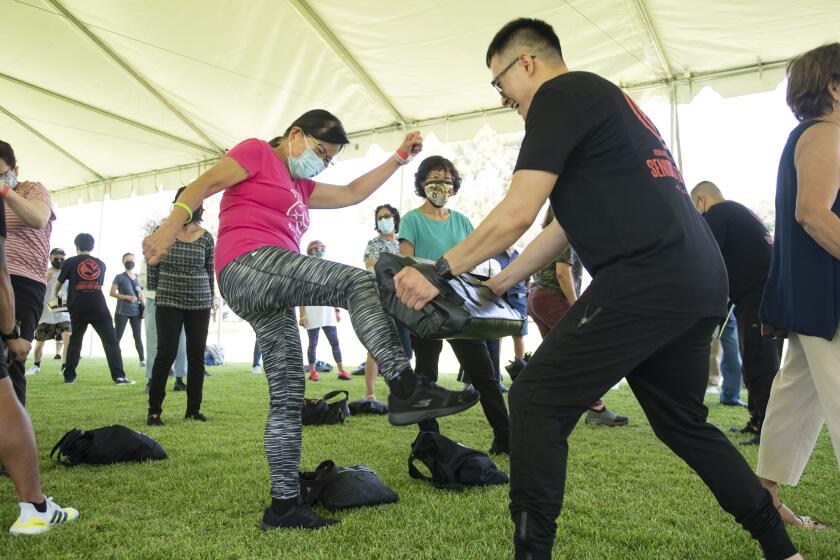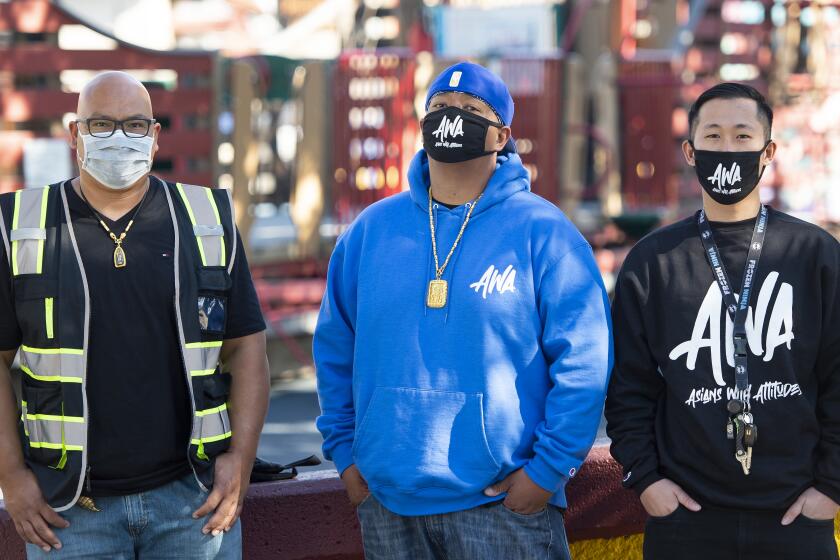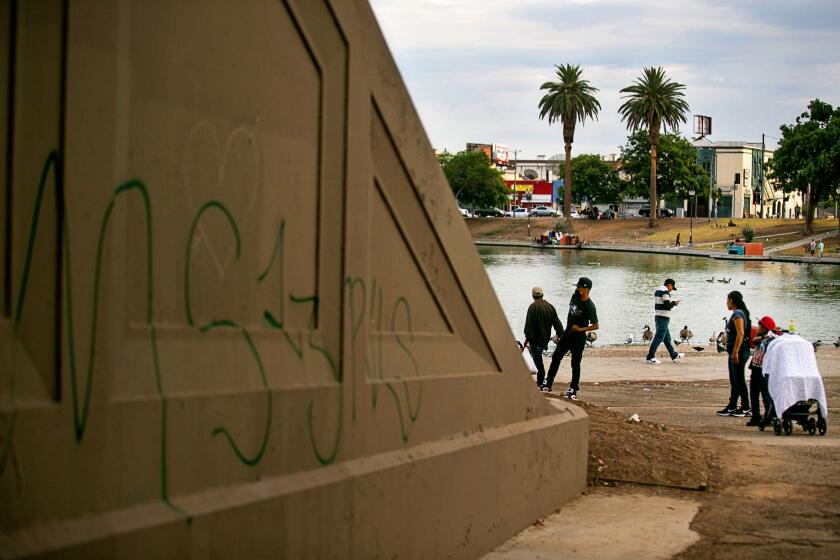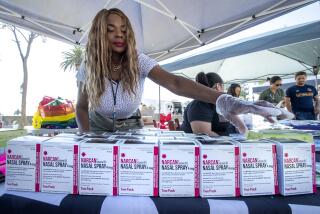Hate crimes increased by 20% in L.A. County last year
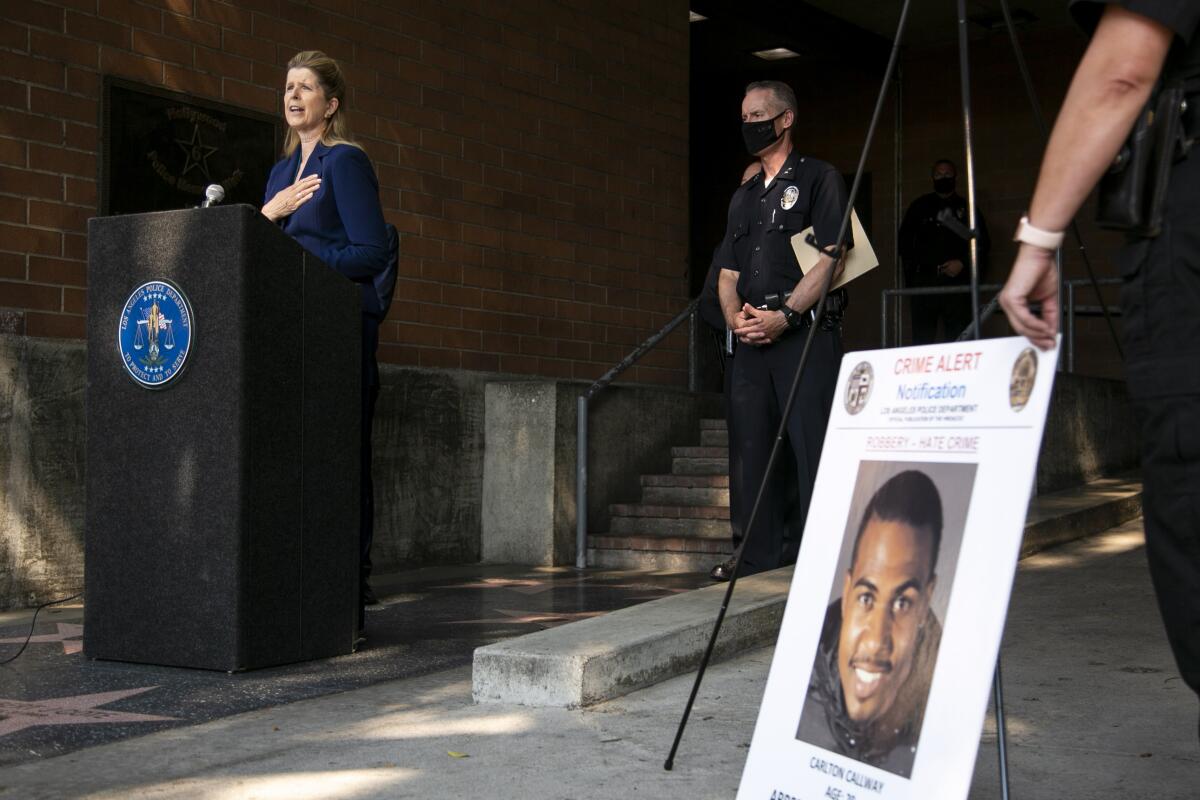
- Share via
Hate crimes increased by 20% in Los Angeles County last year, driven largely by a surge in racially motivated attacks.
Black people were disproportionately targeted in racial hate crimes, making up 42% of victims when they are about 9% of county residents, according to a report released Wednesday by the L.A. County Commission on Human Relations.
For the record:
11:12 a.m. Nov. 11, 2021An earlier version of this article reported that Black people were targeted in 42% of hate crimes in Los Angeles County in 2020. Black people were targeted in 42% of hate crimes that were racially motivated.
The total number of hate crimes in 2020 was 635 — a 20% jump from the previous year and the largest number since 2008.
Hate crimes against Black people rose 35%, and anti-Latino hate crimes increased by 58%.
An increase of 76% in hate crimes against Asians in 2020 was previously reported by the commission.
Overall in L.A. County, racially motivated hate crimes jumped 53%.
The Los Angeles County Commission on Human Relations on Wednesday released a special report on anti-Asian hate crime in LA County in 2020. The report revealed that anti-Asian hate crimes rose 76% from 25 to 44 in 2020, the largest number of anti-Asian hate crimes reported since 2001.
Hate crimes directed against the victim’s religion declined 18%, with 88% of them anti-Jewish.
Crimes motivated by the victim’s sexual orientation increased by 17%, with 84% targeting gay men.
“Similar to national trends, hate crimes and incidents have increased across the board in Los Angeles County,” Hilda Solis, chair of the L.A. County Board of Supervisors, said in a statement. “This report is another alarming reminder that we have a long way to go in building a more inclusive and just society.”
The state attorney general found that hate crimes reported to law enforcement rose 31% in California last year.
In Orange County, hate crimes were up by 35% last year.
Hate-motivated attacks that did not rise to the level of a crime — known as hate incidents — increased by 69%, driven largely by an 19-fold increase in attacks on Asians.
Hate crimes include violent crimes such as homicide and assault as well as some nonviolent crimes such as racial graffiti.
The percentage of hate crimes involving violence in L.A. County increased last year to 68% from 65% — the highest rate since 2003. The group most targeted in violent attacks were transgender people, specifically transgender women.
Of the hate crimes reported against transgender people, about 94% were violent.
Of the 169 hate crimes directed against Black people, about half the attackers were white, followed by Latinos at 42%. This marks the second time in 21 years that white people, not Latinos, committed the largest number of anti-Black crimes.
In one case, a Black woman was driving to work in Torrance in December when she realized she was being tailgated, according to the report.
A white male motorist followed her into her company’s parking lot. When he got out of his car, he started yelling anti-Black, anti-Muslim and anti-female slurs, threatening to kill her. The victim wasn’t Muslim but was wearing a head scarf, the report said.
“The numbers in this report represent real people in our county who experience targeted violence for their existence and religious beliefs,” county Supervisor Holly Mitchell said in a statement.
People who are primed to think about the COVID-19 pandemic are more likely to discriminate against Asian and Latino Americans, a study finds.
Hate crimes targeting white people increased the most of any of the larger racial or ethnic groups — 127%, from 22 to 50.
Most suspects — 78% — were Black, followed by Latinos at 17%.
In a number of the anti-white cases, suspects made references to the Black Lives Matter movement, according to the report.
In one case, a Black man pulled a gun on a white man and robbed him, calling him a “white devil” and yelling, “This is for George Floyd!” according to the report.
In three cases, suspects made remarks about former President Trump.
A Trump supporter whose race the report doesn’t include was wearing a “Make America Great Again” hat with a Trump flag attached to his bicycle. A Black man yelled, “F— Trump! F— white people!” and grabbed the flag, knocking the man to the ground, the report said.
White people make up 28% of the county’s population and in 2020 made up 12% of racial hate crime victims — the largest percentage since 2003.
The attacks demonstrate that MS-13 gangs continue to hold the poorest and most marginalized who live and work in the neighborhood in their grip.
The U.S. Department of Justice has estimated that at least half of hate crimes go unreported. Experts generally agree that hate crimes data are useful to spot trends but do not depict the full extent of acts of hate.
The L.A. County Commission on Human Relations has produced its annual report on hate crimes since 1980, using data submitted by sheriff’s and city law enforcement agencies, educational institutions and community-based organizations.
The L.A. metro area, defined in the report as stretching from West Hollywood to Boyle Heights, saw the highest rate of hate crimes overall — about 13 hate crimes per 100,000 people — followed by seven hate crimes per 100,000 people on the Westside, which includes Beverly Hills, Culver City and several beach cities.
After Black people, Latinos were the second-largest group of victims targeted in racial hate crimes, making up 26% of reports received.
In almost two-thirds of these crimes, anti-Mexican slurs were used by attackers.
The commission noted in its report that although Latinos make up about half of L.A. County’s population, they are a surprisingly low percentage of reported hate crime victims.
One factor could be an increasing reluctance among some immigrants to contact law enforcement because of fears about deportation, the report said.
More to Read
Sign up for Essential California
The most important California stories and recommendations in your inbox every morning.
You may occasionally receive promotional content from the Los Angeles Times.
